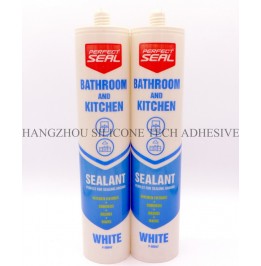Bathroom sealants are essential for preventing water damage and mold growth, but their chemical composition raises concerns when used near food preparation or storage areas. The materials in these sealants, designed for durability in moist environments, may pose health risks if they come into contact with edible items. This guide explores the potential hazards, regulatory standards, and practical steps to avoid contamination.

Many bathroom sealants contain solvents that release VOCs during application and curing. These compounds, such as toluene and xylene, can migrate to surfaces and contaminate food if sealants are used improperly near kitchens or dining areas. Even after curing, residual VOCs may off-gas slowly, creating long-term exposure risks.
Some sealants incorporate heavy metals like lead or cadmium as pigments or stabilizers. These substances are toxic when ingested and can leach into food if sealants are applied on surfaces adjacent to food preparation zones. Antimicrobial additives, while beneficial for mold prevention, may also include chemicals unsafe for human consumption.
Freshly applied sealant remains soft and sticky for several hours to days. During this period, accidental contact with utensils, cutting boards, or food packaging can transfer sealant particles. Children and pets face higher risks due to their tendency to touch surfaces and place objects in their mouths.
Sealants intended for use near food must meet specific standards like FDA 21 CFR 175.300 in the United States or EU Regulation 10/2011 in Europe. These regulations limit the types and concentrations of chemicals that can migrate into food. However, standard bathroom sealants rarely hold such certifications, making them unsuitable for food contact.
Manufacturers must clearly label products with warnings about food contact risks. Phrases like "Not for use in food preparation areas" or "Keep away from edible items" indicate non-compliance with food safety standards. Consumers should heed these warnings and avoid using bathroom sealants in kitchens or dining spaces.
Different countries enforce varying levels of regulation. For example, Canada’s Health Products and Food Branch provides specific guidelines for sealants used in residential settings, while Australia’s NICNAS regulates chemical imports. Cross-border shoppers must verify compliance with local standards before purchasing sealants.
Maintain a clear physical barrier between bathroom sealant application and food zones. Use doors or partitions to separate wet areas from kitchens. In open-plan homes, apply sealants during times when food isn’t being prepared, and cover adjacent countertops with protective sheeting.
Allow sealants to cure fully before exposing the area to food-related activities. This process, which may take 24–72 hours depending on humidity and temperature, ensures chemicals stabilize and minimize off-gassing. Use exhaust fans to accelerate ventilation and reduce airborne contaminants.
After curing, thoroughly clean all surfaces near the sealant application site. Use mild detergents and warm water to remove any residual particles. Avoid abrasive cleaners that might scratch surfaces and create micro-grooves where sealant debris could accumulate.
When sealing areas near food, opt for products explicitly labeled as food-grade or potable water-safe. These sealants use inert materials like silicone or epoxy resins that meet strict migration limits. While primarily designed for kitchen backsplashes or countertops, some variants may work in adjacent bathroom zones with careful application.
For eco-conscious households, consider natural sealants made from beeswax, plant oils, or water-based acrylics. These options, though less durable than synthetic sealants, offer lower toxicity and reduced migration risks. They work best in low-moisture areas away from direct water exposure.
Hiring certified contractors ensures proper sealant selection and application. Professionals understand the nuances of chemical compatibility and can recommend safe products for specific environments. They also follow strict protocols to prevent cross-contamination during installation.
If food comes into contact with uncured sealant, discard it immediately. Do not attempt to wash or scrape off residues, as this may spread contaminants. Clean all utensils and surfaces involved with hot soapy water, followed by a vinegar rinse to neutralize alkaline residues.
Watch for signs of chemical exposure, such as nausea, dizziness, or skin irritation, especially in children and sensitive individuals. Symptoms may appear hours after ingestion or contact. Seek medical attention promptly if adverse reactions occur.
Regularly inspect sealants in food-adjacent areas for cracks or deterioration. Damaged sealants may release trapped chemicals or attract mold, creating secondary health risks. Replace aging sealants with food-safe alternatives during renovations.
By understanding the chemical risks, adhering to regulatory standards, and implementing preventive measures, households can maintain hygienic environments without compromising safety. Proper sealant selection and application practices are critical to protecting food from contamination in shared living spaces.
Copyright 2019 by Hangzhou Silicone Tech Adhesive Co., Ltd. All rights reserved.
Bathroom Sealant | Acrylic Sealant | Dow Corning 795 | Aquarium Sealant | Dow Corning 732 | Clear Silicone Sealant | Polysulfide Sealant | Glazing Sealant | Mirror Sealant | IG Sealant
Powered by Onepound